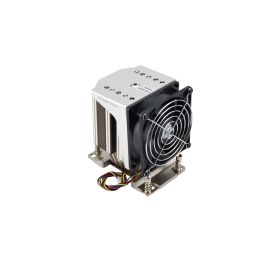Phoronix: An Extensive Look At The AMD Naples vs. Rome Power Efficiency / Performance-Per-Watt
Since the AMD EPYC 7002 "Rome" series launch in August we have continue to be captivated by the raw performance of AMD's Zen 2 server processors across many different workloads as covered now in countless articles. The performance-per-dollar / TCO is also extremely competitive against Intel's Xeon Scalable line-up, but how is the power efficiency of these 7nm EPYC processors? We waited to deliver those numbers until having a retail Rome board for carrying out those tests and now after that and then several weeks of benchmarking, here is an extensive exploration of the AMD EPYC 7002 series power efficiency as well as a look at the peak clock frequencies being achieved in various workloads to also provide some performance-per-clock metrics compared to Naples.
Since the AMD EPYC 7002 "Rome" series launch in August we have continue to be captivated by the raw performance of AMD's Zen 2 server processors across many different workloads as covered now in countless articles. The performance-per-dollar / TCO is also extremely competitive against Intel's Xeon Scalable line-up, but how is the power efficiency of these 7nm EPYC processors? We waited to deliver those numbers until having a retail Rome board for carrying out those tests and now after that and then several weeks of benchmarking, here is an extensive exploration of the AMD EPYC 7002 series power efficiency as well as a look at the peak clock frequencies being achieved in various workloads to also provide some performance-per-clock metrics compared to Naples.





Comment